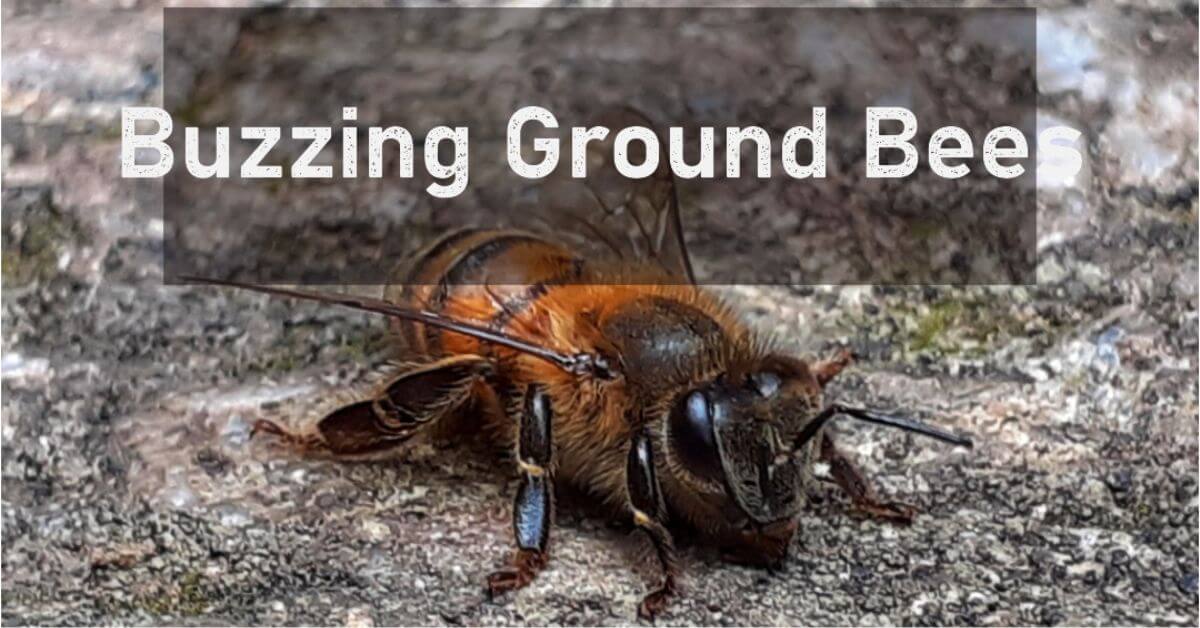In this comprehensive guide, we will walk you through effective methods to get rid of ground bees instantly and safely. Ground bees, also known as solitary bees, are non-aggressive pollinators that play a vital role in the ecosystem. However, their nesting activities can become problematic when they establish colonies in close proximity to human activity areas. We understand the importance of protecting both the environment and human safety, so we have compiled this step-by-step guide to help you safely and efficiently remove ground bees without causing harm to these valuable creatures.
Understanding Ground Bees
Ground bees are solitary insects that prefer to build their nests in the ground. They are not aggressive and rarely sting unless provoked or threatened. Unlike social bees like honeybees, ground bees do not have a queen or worker bees. Each female ground bee creates her own nest and cares for her offspring independently. Their nesting season typically lasts from early spring to late summer, and they are essential pollinators for many plants during this time.
Identifying Ground Bee Nests
Before you begin the removal process, it’s crucial to identify ground bee nests accurately. Look for small holes in the ground, typically 1/4 to 1/2 inch in diameter, surrounded by a mound of loose soil. These nest entrances are the openings to the underground tunnels where the bees create their nests and lay eggs.
Protective Gear and Safety Precautions
Before attempting any removal methods, it’s essential to prioritize safety. Ground bees, though non-aggressive, may sting if they feel threatened. Here are some protective gears and safety precautions to consider:
Protective Clothing
Wear thick, long-sleeved clothing and pants to cover your skin fully. Opt for light-colored clothing as ground bees are less attracted to light colors.
Bee Veil or Netting
A bee veil or netting will provide additional protection for your face and neck while allowing you to see clearly.
Gloves
Use thick, leather gloves to protect your hands from potential stings.
Dusk or Early Morning Removal
Ground bees are less active during dusk or early morning, making it an ideal time for removal.
Natural Repellents
If you’re looking for non-lethal and eco-friendly ways to discourage ground bees from nesting in unwanted areas, consider using natural repellents:
- Citrus Peels: Scatter citrus peels around the nesting area. The strong scent helps deter ground bees.
- Peppermint Oil: Create a mixture of water and peppermint oil and spray it around the nesting site. The scent acts as a natural repellent.
- Cucumber Slices: Placing cucumber slices near the nests can also discourage ground bees from nesting there.
Related Posts:
- Why Do Bees Die After Stinging? How to Save Bees
- Why are bees important in Agriculture,
- Do bees have knees: Meaning, Origin, and Fascinating Facts
Removing Ground Bee Nests
If you’ve identified ground bee nests and wish to remove them, follow these steps carefully:

- Nighttime Removal: Wait until nightfall when ground bees are less active and inside their nests.
- Soapy Water Solution: Prepare a soapy water solution by mixing liquid dish soap with water.
- Pouring the Solution: Slowly pour the soapy water into the nest entrance. The soap will suffocate the bees inside.
- Covering the Nest: After pouring the solution, cover the nest entrance with soil to prevent other bees from using the same site in the future.
Safety Tips
While dealing with ground bee removal, always keep these safety tips in mind:
- Avoid Aggressive Behavior: Ground bees are generally non-aggressive, but sudden movements or loud noises near their nests may trigger a defensive response. Remain calm and move slowly when in their vicinity.
- Keep Children and Pets Away: If ground bee nests are in areas frequented by children or pets, cordon off the area and restrict access until the removal process is complete.
- Avoid Using Chemical Pesticides: Chemical pesticides may harm not only ground bees but also other beneficial insects. Opt for natural removal methods whenever possible.
- Dispose of Nest Material Safely: After removing ground bee nests, carefully dispose of the nest material, ensuring it won’t pose a risk to humans or animals.
Preventive Measures
To minimize the likelihood of ground bees returning to unwanted areas, consider implementing these preventive measures:
- Landscaping: Alter the landscape in your yard to make it less appealing to ground bees. Tightly compacted soil or a thick layer of mulch can discourage them from nesting.
- Covering Potential Nesting Sites: If you have identified areas where ground bees might nest, consider covering those spots with gravel or landscaping fabric to deter nesting.
- Attract Natural Predators: Encourage the presence of natural ground bee predators, such as birds and small mammals, which can help control the ground bee population.
Professional Bee Removal Services
If you’re uncertain or uncomfortable handling ground bee removal on your own, consider hiring professional bee removal services. These experts have the experience and knowledge to safely relocate the ground bee colonies without causing harm to the bees or the environment.
Conclusion
With this comprehensive guide, you now have the knowledge and tools to get rid of ground bees safely and instantly. Remember to always prioritize safety and use protective gear when dealing with ground bee nests. Whether you opt for natural repellents or seek professional assistance, you can effectively manage ground bee populations without causing harm to these valuable pollinators.




